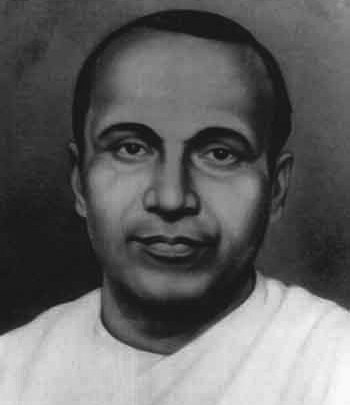<Back to Index>
- Philosopher Francis Herbert Bradley, 1846
- Author Jaishankar Prasad, 1889
- Prime Minister of Sweden Sven Olof Joachim Palme, 1927
PAGE SPONSOR


Jaishankar Prasad (Hindi: जयशंकर प्रसाद) (January 30, 1889 – January 14, 1937) is one of the most famous figures in modern Hindi literature.
Jaishankar Prasad was born on January 30, 1889, in an elite madheshiya vaisya family in Varanasi, Uttar Pradesh, India. His father Babu Devki Prasad, also known as Sunghani Sahu (सुंघनी साहू), was a tobacco dealer. After, he lost his father at an early age, he had to encounter some family problems at a relatively young age, and left school after class eight. However, he remained interested in literature, languages, and ancient history, and continued studying at home. Thereafter he developed a special inclination towards the Vedas and these interests are innately reflected in the deep philosophical content of his works. He was also interested in the study of ancient relics.
Apart from being a poet, he was also a philosopher, historian and a sculptor. In later years he made himself aloof from worldly matters, and adapted a nearly ascetic life. Though, some of his interests such as chess, gardening, shashtrarth and poetry recitation remained with him.
Jaishankar Prasad was a contemporary of some other literary greats of that time like Acharya Ram Chandra Shukla and Munshi Premchand. His initial poetry (Chitraadhar collection) was done in the Braj dialect of Hindi, but later he switched to the Khadi dialect or Sanskritized Hindi. In his earlier days, he was influenced by Sanskrit dramas, but later the influence of Bengali and Persian dramas is evident on his works. Prasad's most famous dramas include Skandagupta, Chandragupta and Dhruvaswamini . He is considered one of the four pillars (Stambh) of Chhayavad in Hindi Literature along with Sumitranandan Pant, Mahadevi Verma and Suryakant Tripathi 'Nirala'. His style of poetry can at best be described as touching (maarmic). Art and philosophy has been exquisitely amalgamated in his writings. He used mainly Tatsam and Tatdbhav words - some of them made really exquisitely by himself. The
subject of his poetry spans the entire horizon of subjects of his era,
from romantic to nationalistic. He in a way signifies the epitome of classical Hindi poetry. One of his patriotic poems, 'Himadri Tung Shring Se', won him many accolades in the era of Indian independence movement. However, Kamayani undoubtedly remains his best creation.
Kamayani is widely considered the best of his works. The majority of critics agree that it is the best work of poetry (Mahakavya) in Hindi.
Though Kamayani has portrayals of divergent subjects, in entirety, it
depicts the development of human culture in metaphoric style. Kamayani
tells the story of the great flood
and
the central characters of the epic poem are Manu (a male) and Shradha
(a female). Manu is representative of the human psyche and Shradha
represents love. Another female character is Ida, who represents
rationality. Some critics surmise that the three lead characters of
Kamayani symbolizes a synthesis of knowledge, action and desires in
human life. His dramas are considered to be the most pioneering ones in Hindi. The majority of them revolve around historical stories of Ancient India. Some of them were also based on mythological plots. In 1960s, Shanta Gandhi, Professor of Ancient Indian Drama while at National School of Drama, revived interest in Jaishankar Prasad’s plays for modern Indian theatre, by successfully staging his most important play Skanda Gupta written in 1928, with little changes to the original script, thus quashing doubts over its "stagability". He wrote short stories as well. The subjects were mixed - ranging from historical and mythological to contemporary and social. Mamta (motherly love) is a famous short story based on an incident where a Mughal Badshah gets refuge in a Hindu widow's home whose father was killed by Badshah's army. Another one of his well-known short stories called chhota jadugar (little
magician) portrays the life of a child who learns to earn his own
living by performing small skits with his dolls on streets. He also wrote a small number of novels.